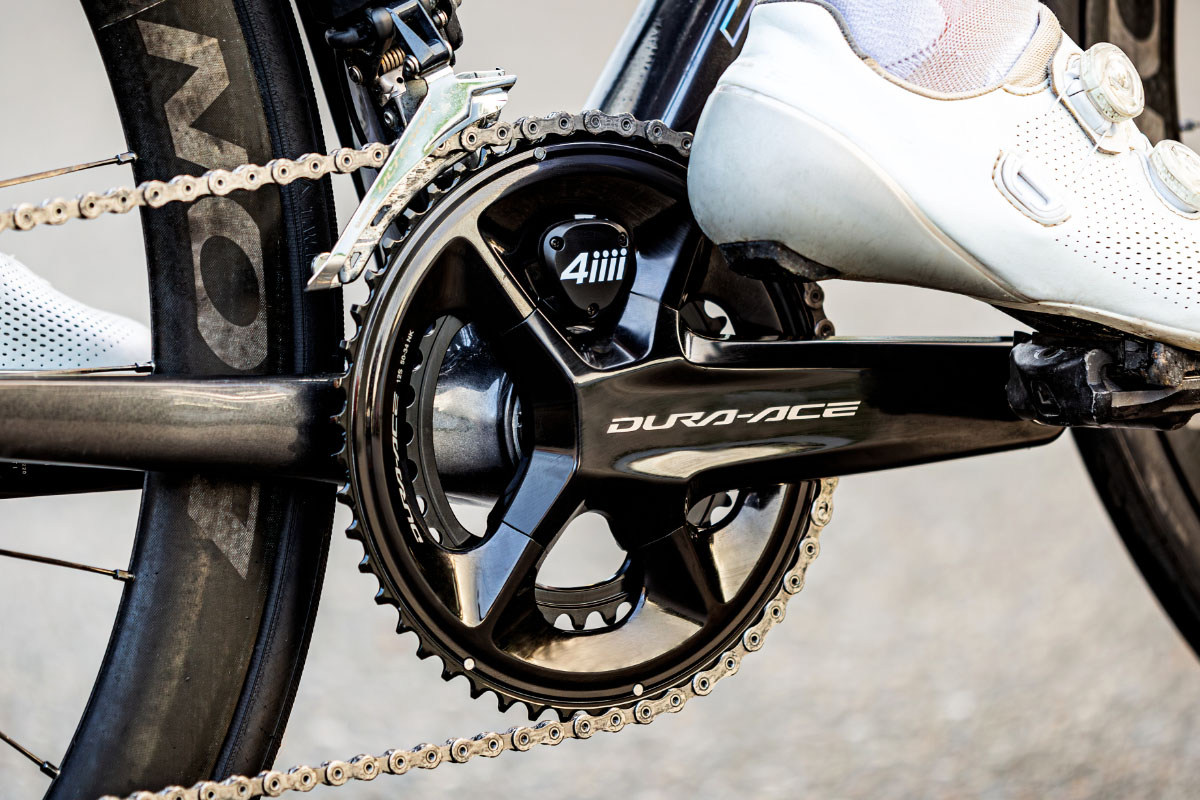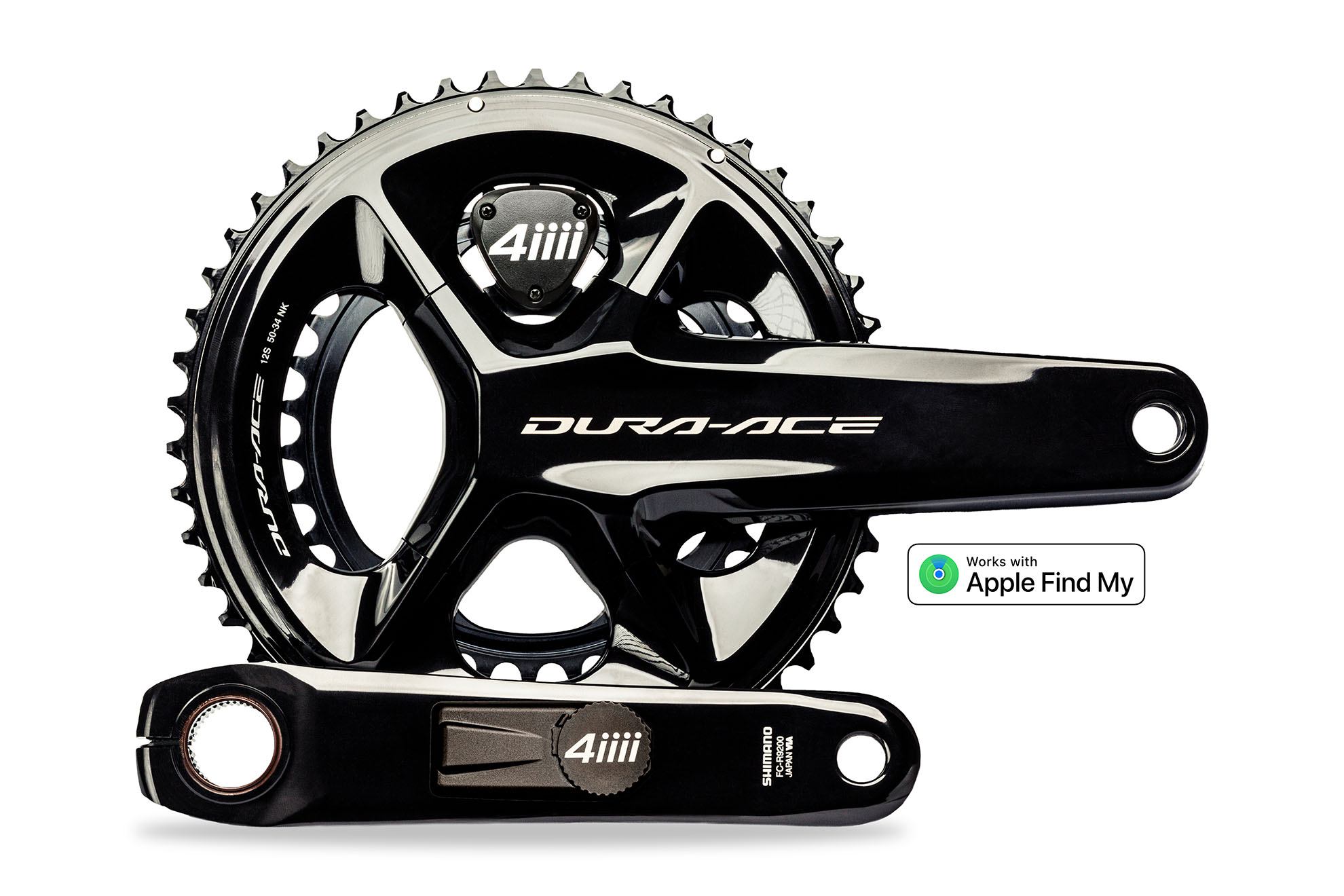Single-Sided vs Dual-Sided Power - Which one is Right For You & Why
Posted by Andrew Davidson on February 13, 2024
With the exciting launch of our new dual-sided PRECISION 3+ PRO Powermeter, we thought we’d explore some of the reasons a rider may choose dual power over single-sided and vice versa. Ultimately, there’s no wrong decision, both offer amazing insight and data upon which to build training and racing goals - but some differences are worth considering. If you’re in the market for a power meter or looking to add power meters to more of the bikes in your stable, here are some points that may help you make the choice that’s right for you!
What’s the Difference?
Let’s start with a basic understanding of what we’re discussing when we say “single-sided” and “dual-sided” power meters. A single-sided power meter means that only one of the two cranks has a power meter built on to it, and as a result, you’re measuring the output of one leg. To calculate the total power output of a rider, that single-sided data is doubled, which is what you’ll see on your cycling computer, training app, etc. So for example, if you have a single-sided power meter on your left crank arm, and your left leg is producing 125W, your computer will display 250W as your total output. As you have likely deduced, a dual-sided power meter is a crankset with a power meter installed on both crank arms. This means each leg is being independently measured and transmitting unique data, so if your left leg is producing 150W and your right leg is producing 145W, you’ll get a total power output reading of 295W - the exact output number, as opposed to one side being doubled.
The winter months are also a great time to focus on lower-intensity power. This helps aid in creating better metabolic efficiency. Knowing which power zones you utilize fats vs carbohydrates is critical for fueling before, during and after a ride. This information will serve as the foundation for determining how we can be more efficient for longer or higher-intensity training rides or events we have coming up. I work closely with my coach to try and work within my fat-burning zones a bit more in the winter, and I also use this approach with my athletes. A power meter gives you an extremely accurate blueprint of calories burned based on output. The next level of this equation would be identifying what type of calories you are utilizing in each power zone (ie: fats or carbs).
My favourite intervals are currently low cadence drills in my medio power zone (based on Inscyd testing). My metabolic data has already started to change and shows I can utilize fats more efficiently. I have noticed this change physically and feel great for longer periods on the bike with fewer carbs. As we close in on the New Year and beyond, I will be adding in more intensity in the form of 2-5min VO2 efforts as well as Sweet Spot intervals. In these workouts, carbs will be heavily important, but my body will still be able to metabolize fats when needed. These types of workouts are so much more effective with a power meter since our heart rate data can be unreliable when used alone and using the 1-10 RPE scale can also be highly subjective based on multiple factors. Power numbers don’t lie.
Shared Features:
We’re proud to say that whether you opt for a single-sided PRECISION 3+ or dual-sided PRECISION 3+ PRO Powermeter, you’re getting an extensive list of features. Notably, both models are equipped with Apple Find My integration, so keeping track of your bike at home or on your travels is made easy. Additionally, they share key features such as automatic terrain selector, IPx7 waterproofing, accuracy within +/- 1%, and a 3 year warranty.
| Caractéristique | PRECISION 3+ PRO | PRECISION 3+ | ||
|---|---|---|---|---|
| Type | Bilatéral | Côté opposé à la transmission | ||
|
|
|
|||
|
|
|
|||
|
|
|
|||
|
|
|
|||
|
|
|
|||
|
|
- | |||
| Pile bouton CR2032 |
|
|
||
| Jusqu’à 550 h | Jusqu’à 800 h | |||
| IPx7 | IPx7 | |||
| Cadence | 30 - 170 tr/m | 30 - 170 tr/m | ||
| Plage de puissance | 0 - 4,000 W | 0 - 4,000 W | ||
| 5,5 mm | 5,5 mm | |||
| 29 g | 9 g | |||
| Plage de températures de fonctionnement | 0 - 50 ºC | 0 - 50 ºC | ||
| Plage de températures de stockage | -40 - 60 ºC | -40 - 60 ºC | ||
|
|
|
|||
|
||||
Single-Sided Might be Right For You If…
You’re new to the cycling and/or power meter world and want to find the ideal balance of price point and simplicity, while still getting a powerful training tool. Power meters and the ability to measure watts has become the gold standard for the vast majority of cyclists who are wanting to dive into the data a bit more, as a means of successfully achieving a goal. While heart-rate monitoring was once the standard for measuring effort (and still has value), power has become the modern point of reference as it offers a more consistent, accurate and in-depth picture of a rider’s workload. Whether your goal is burning “X” amount of calories a day via cycling, building up an endurance base for a bike-packing trip, or working on fitness for specific race efforts, a power meter is hugely beneficial.
As noted earlier, a single-sided power meter will double the wattage of one leg and display that number as your total power output, which does leave some values that aren’t fully representative of your true workload. However, when you factor in that most imbalances between left and right leg are fairly minor and that ultimately power values are a reference to yourself, a single-sided option is still a highly accurate and beneficial option.. If I’m only looking to better my own PBs when it comes to a 20-minute power test, or sustained power over the span of a 2-hour ride, I’ll be fully capable of doing that accurately with a single-sided option.
The lower price point of the single-sided unit also makes it a great option for those just wading into the world of watts and budgeting for the endless list of toys, gadgets, events and trips your new addiction/hobby entails. This will also be the slightly simpler of the two options, as you’re only pairing and calibrating one power meter, having to swap batteries for one side, and not getting overwhelmed with data that dual-sided metrics may have the capacity to do for some newer riders or those less tech-driven.

Here we can see an example of different power measurements as a result of single-sided vs dual-sided power of a rider with a left/right leg imbalance. The orange line is a left-side only power meter, the turquoise is a right-side only power meter, and the pink line is from a dual-power meter, with the green line noting cadence. As you can see, this rider was putting out more power with their left leg than their right, and if using a single-sided power meter, would be getting slightly higher or lower total power readings than what they’re truly producing. The dual-side power meter shows a line between the two left/right lines, which is exactly where it should be, as a reflection of the average output of their two legs.
Double-Sided May Be The Direction To Go If…
You’re looking for marginal gains in performance, working on power imbalance issues, or just a big fan of data analysis and cycling metrics. With each crank transmitting the unique data from each leg, you’re able to see in real-time and in post-ride analysis exactly what your pedaling output equates to. If you’re wanting to leave no stone unturned, when it comes to honing your form, a dual-sided power meter is the ultimate tool for getting into the fine details. For those competing in Ironman triathlons, time-trials, competitive road races, gravel stage races, the difference of a few percent in performance is huge.
Perhaps you’re returning from an injury, or have a habit of overcompensating with one leg, with dual-sided power you’ll be able to see the disparity in left/right balance and take corrective actions to even things out. Additionally, the ability to use the metrics of pedal smoothness and torque effectiveness from both legs, allows a dedicated rider to optimize their pedaling stroke and minimize any notable “dead spots.” These small gains can add up to big results when you factor in the countless hours of training and racing that a season entails, which can now be done with the highest degree of accuracy. The saying, “train smarter, not harder” is certainly applicable here - or at least you can now train smarter AND harder!
Full details on the new PRECISION 3+ PRO Powermeter can be found here.



